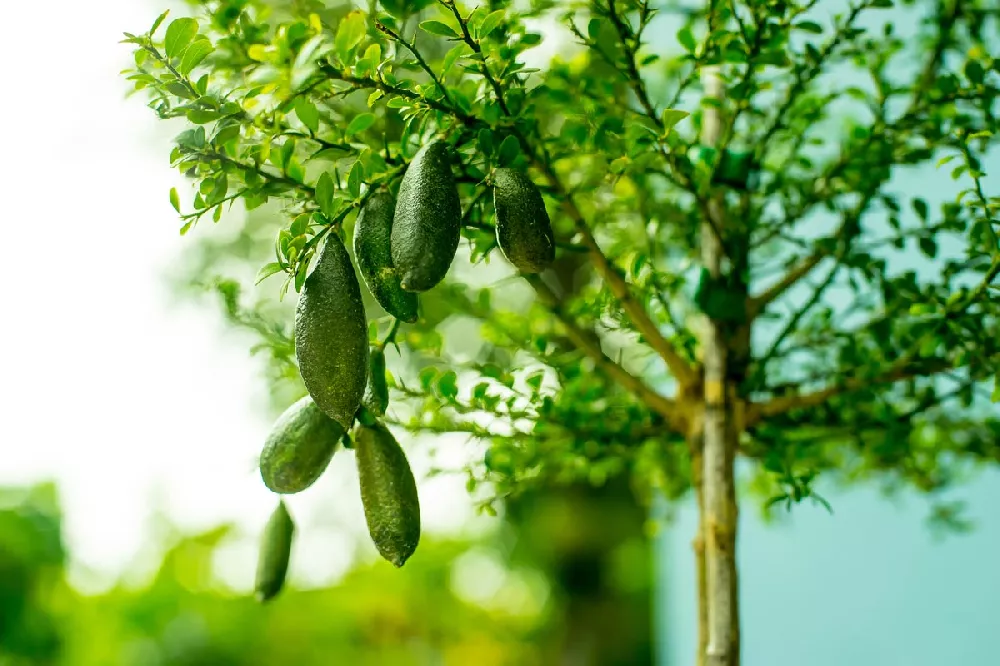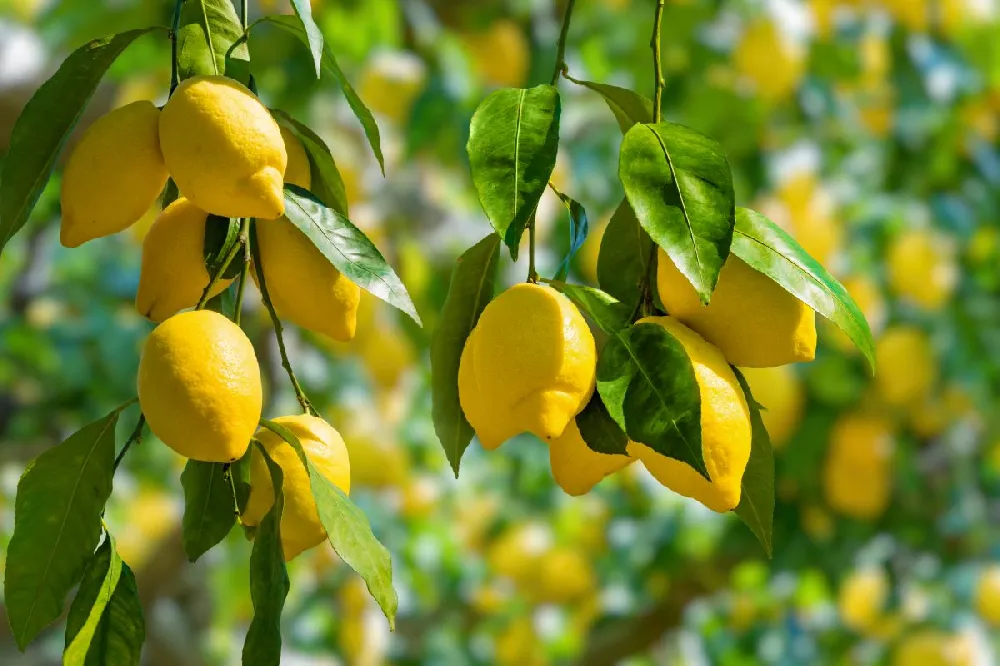- Home >
- Edible Plants >
- Finger Lime Tree
Finger Lime Tree for Sale - Buying & Growing Guide
- Ships in 1-2 days
- 1-Year Warranty Eligible
- Pots or accessories are not included unless specified in the product options.
Shipping Details:
Products shipped through FastGrowingTrees.com. Once your order is shipped, you’ll receive an email with a tracking number and estimated delivery date. Most orders will ship immediately.
The finger lime tree, Citrus australasica, grows citrus fruits that are unlike most that you have ever seen. These fruits can come in a range of colors, including red and green, and contain many small juice vesicles, with each holding plenty of juice and flavor. The finger lime tree also proves to be an easy tree to care for — and one that has some versatility. When left without much pruning, this species can develop into a dense hedge. In other settings, it can take the form of a small tree or a manageable container species.
- The finger lime tree produces small but flavorful citrus fruits.
- It is easy to bring to harvest with a simple care routine
- It can grow as a dense hedge or small tree
Plant Care
Sunlight

The finger lime tree survives in both full and partial sunlight.
Watering
Keep the soil moist by watering about once per week throughout the growing season.
Fertilizing

Fertilize once every three months with a nitrogen-rich mix or a citrus fertilizer.
Planting and Care
Planting instructions
The manner in which you grow a finger lime tree depends on where you live. For example, if you live in the southeastern United States, Texas, or the West Coast, you have a chance to grow this plant outdoors year-round. Those who live in colder climates will need to plant their finger lime trees in containers to overwinter them when frost arrives. Whether you grow this plant indoors or out, it will survive with full or partial sun and does best with fertile, loamy soils.
Watering and nutrients
As is true for most fruit trees, your finger lime tree should receive plenty of water to keep its soil moist at nearly all times. Typically, you should give this plant water once per week during the growing season. However, monitoring the soil and watering based on the moisture level you feel is a better approach. Beginning in spring, you can fertilize your finger lime tree about once every three months. When fertilizing, use a blend that is specific to citrus trees. Otherwise, you can use a nitrogen-heavy fertilizer or a balanced fertilizer.
Pollination
Like most fruit trees, finger lime trees are self-fertile, but they will provide a better harvest when cross-pollination occurs. In the outdoors, the finger lime tree will make use of flying insects to carry its pollen from one flower to another. However, those who grow this plant indoors cannot rely on those pollinators. Instead, indoor growers will need to conduct hand pollination. The easiest way to do that is to use a small paintbrush to move the pollen from the male parts of the plant to the female structures.
Pruning
When pruning a finger lime tree, you should focus first on removing any dead or declining branches. Next, you should improve the overall shape of your tree to make for better harvesting and disease prevention. The best way to do that is to encourage the development of a few main branches that are strong enough to carry a lot of fruit. You should also thin the canopy to improve air circulation and cut away any suckers that form at this tree’s base.
Pests, diseases, and animals
The most prominent infestation concerns for the finger lime tree come from aphids, grasshoppers, and a few other insects, including mites. Occasionally, scale insects and citrus leaf miners may also afflict your plants. Along with those problems, finger lime trees can also contract diseases. Twig dieback and different forms of rot can be common, as well as the Huanglongbing disease, which causes the leaves of this plant to turn yellow and die. As soon as you notice any disease signs, you should remove the affected portion.
Harvesting
After about half a decade of life, your finger lime tree will reach an age at which it is mature enough to bear fruit. When this occurs, the tree’s flowers will bloom in the fall and drop off the tree to give way to the fruits. After several months, the fruits will reach a harvestable stage during the spring months of March, April, and May. Finger limes that are ready for harvest will be a few inches long, should have consistent color, and will be firm to the touch.
Achieving maximum results
It’s often best to control the shape of a finger lime tree with your pruning cuts. Without some training, these plants will usually develop into a denser, more shrub-like form. While there is nothing inherently negative about this form, it is not ideal for a fruit harvest. It’s better to trim this plant into a small tree form to allow for better fruit-bearing and harvest. You should also understand that irrigation and drainage are essential for this tree, as excessive moisture and a lack of moisture will both interfere with growth.
FAQs
How long does it take a finger lime tree to bear fruit?
Should a finger lime tree lose its leaves?
Like all members of the Citrus genus, the finger lime tree is an evergreen species with broad leaves. This means that your finger lime tree should not lose its leaves during any part of the year, including winter. If your finger lime tree does begin to lose a significant portion of its leaves or the leaves begin to change color, it is likely a sign that your tree has contracted a disease or is hosting a pest infestation.
Do finger lime trees attract bugs?
Finger lime trees can attract many bugs, some of which may be quite harmful to the plant. This insect-attracting issue is often present in most of the most popular citrus plant varieties. However, you can cut down on the number of bugs that your finger lime tree attracts by growing it indoors. Indoor settings naturally have fewer insects, meaning there will be fewer that attack your plant.
Compare Similar Products
You can't add more Product Name - Product size to the cart.
OK









